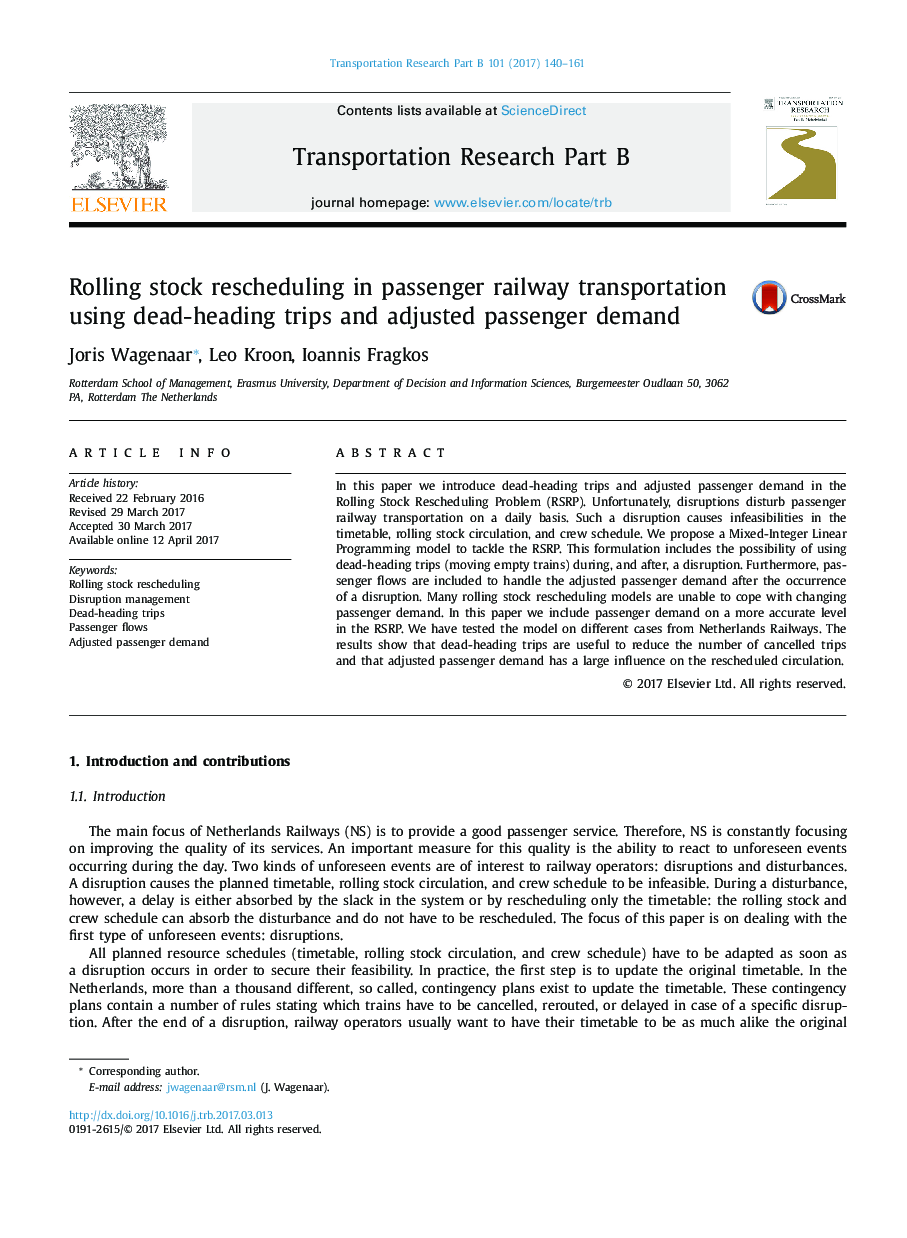| Article ID | Journal | Published Year | Pages | File Type |
|---|---|---|---|---|
| 5127014 | Transportation Research Part B: Methodological | 2017 | 22 Pages |
â¢A method to include dynamic passenger flows and dead-heading trips is proposed.â¢An efficient preprocessing method is applied to find potential dead-heading trips.â¢Solutions are found fast enough for usage in a real-time environment.â¢Different boarding strategies for passengers are tested.
In this paper we introduce dead-heading trips and adjusted passenger demand in the Rolling Stock Rescheduling Problem (RSRP). Unfortunately, disruptions disturb passenger railway transportation on a daily basis. Such a disruption causes infeasibilities in the timetable, rolling stock circulation, and crew schedule. We propose a Mixed-Integer Linear Programming model to tackle the RSRP. This formulation includes the possibility of using dead-heading trips (moving empty trains) during, and after, a disruption. Furthermore, passenger flows are included to handle the adjusted passenger demand after the occurrence of a disruption. Many rolling stock rescheduling models are unable to cope with changing passenger demand. In this paper we include passenger demand on a more accurate level in the RSRP. We have tested the model on different cases from Netherlands Railways. The results show that dead-heading trips are useful to reduce the number of cancelled trips and that adjusted passenger demand has a large influence on the rescheduled circulation.
